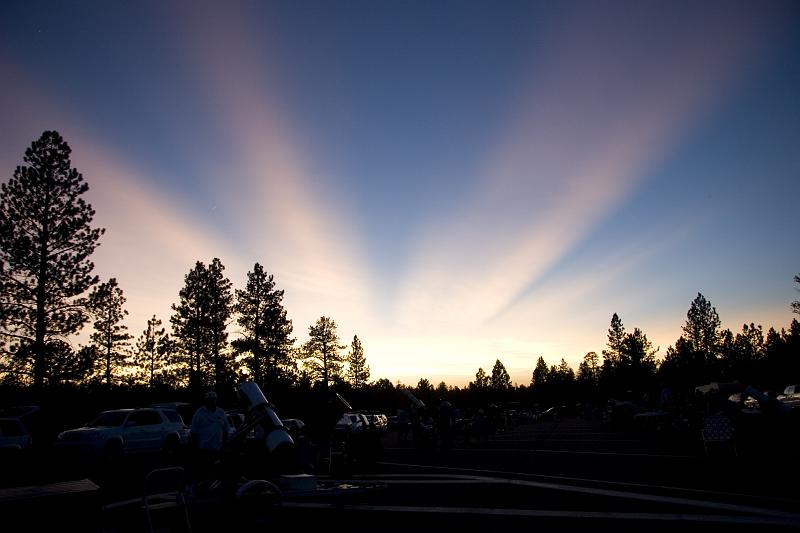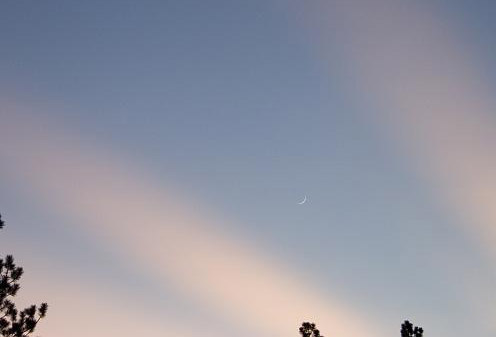The winter's moon - a smiling crescent just after sunset Feb 5, 2011 (click to see moon upper center)

The summer's "backwards C" crescent moon at sunset, late June 2007 (click to see moon in lower right)
Have you ever wondered why the crescent moon looks like a smile in the winter and spring and like a backwards “C” in the summer and fall? It looked like a smile right now – below, next to and above Jupiter for several days after the February new moon. You can see the same waxing (getting bigger) crescent in early March 2011. Just look in the western sky after sunset beginning the day after new moon, on about March 5 or 6th. You’ll also see Jupiter and Mercury just above the horizon an hour after sunset.
Early birds can see a repeat of the waning (getting smaller) crescent moon phase a few days before the new moon, too. Look in east the last days of February up until new moon on March 4th. That bright object sharing the dawn skies with the crescent moon is the planet Venus! You can read more about moon phases here on the EarthSky website.
The best way to understand the reason why, is to look where the sun is, and how and where it shines on the moon. Draw an imaginary line connecting the setting sun, the moon, and any other planets that appear in the sky. That imaginary line is the ecliptic – the path the sun takes through the stars. It’s also the Earth and planets’ orbital plane. You can think of it as a projection of Earth’s plane on a sky sphere. The planets orbit the Sun, and the moon orbits the Earth and so you will always find the planetary lineup along the ecliptic.
In the winter and spring, the ecliptic appears almost vertical and arcs higher in the sky. The moons’ lit side faces the sun. That makes the waxing crescent moon look like a smile, or a boat, or the old moon in the new moons’ arms once light reflected off the Earth – called earthshine – reveals the unlit disk of the moon lit by reflected from Earth.
In the summer/fall, the ecliptic has a lower or shallower angle in the sky, and the lit crescent, as always, faces the sun, showing us a lit crescent facing the sun, which appears like a backwards “C”. I could write more, but instead, I’ll let you enjoy the images from our own observing sessions in the winter and the summer, and then get out and see the crescent moon for yourself soon.


[...] This post was mentioned on Twitter by Jane Houston Jones, Morris "Mojo" Jones. Morris "Mojo" Jones said: RT @jhjones: Why does the winter crescent moon look like a smile? The why behind the wow: http://is.gd/w2USl1 #moon #lunar #observethemoon [...]